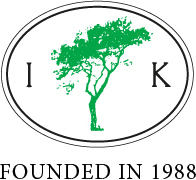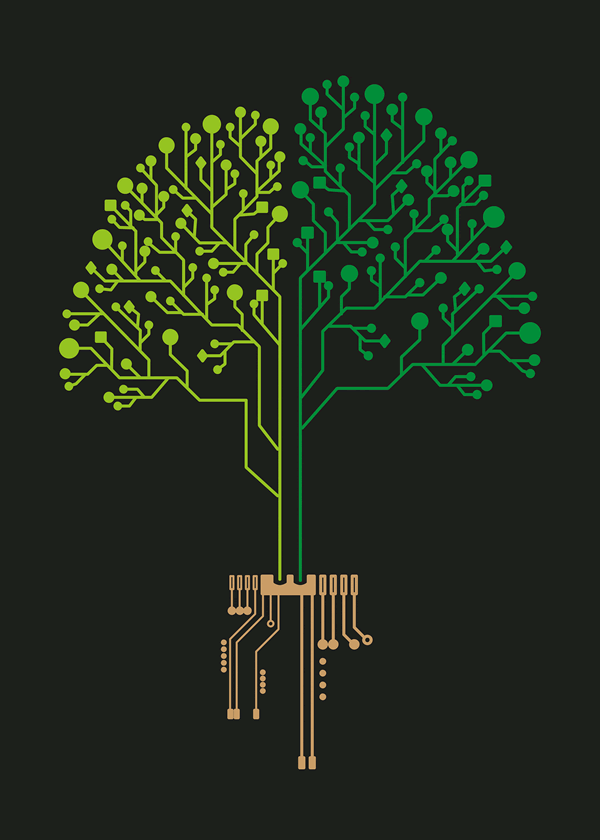ikfoundation.org
Promoting Natural & Cultural History





TO OBSERVE – a short history and introduction
”We must look for a long time before we can see” – the American naturalist David Henry Thoreau (1817-1862) once wrote in the essay Natural History of Massachusetts (Excursion 1863) and with that in mind, if one tries to understand Nature it necessitates time and studies to reach such aims.
“
We must look for a long time before we can see.
”
 The interest to observe and document has followed mankind during a very long time, but first in the 18th and 19th centuries developed to what we today name as observations within science as:
The interest to observe and document has followed mankind during a very long time, but first in the 18th and 19th centuries developed to what we today name as observations within science as:- Making observations of the phenomenon.
- Testing the hypothesis’ predictions by an observational study or field study.
VISIONS
Inspired by scientific fieldwork on land and at sea, as the IK Foundation has co-operated within since the 1980s when Lars Hansen (1960), Head of the IK Foundation and naturalist, has gradually established a new way of thinking about practical fieldwork, which was further emphasised with the final publishing of the monumental book series The Linnaeus Apostles Global Science & Adventure (2007-2012).
The starting point included questions like:
- Can we use the modern digital information technology and artificial intelligence for autonomous scientific field stations to observe the landscape – still untouched and wild – to increase our understanding about such environments and raise awareness as well as respect for its protection?
- Is it possible to develop new technology, to better combine observation results from previous centuries within Natural & Cultural History into present-day research projects, to deepen the understanding of long-term changes on our planet?
- Are there any conditions for building scientific and knowledge based bridges between people, countries, organisations, scientific disciplines via new techniques and free information collected from Field Stations, also in combination with such information and earlier linked knowledge to each specific observed geographical place?
In 2012 the first step of the interdisciplinary projects The BRIDGE BUILDER EXPEDITIONS was established by The IK Foundation, as the overarching definition for a series of contemporary and scientifically sustainable projects. An undertaking which aims to inspire and to contribute to our understanding of our shared planet! These projects are grounded in the concepts of retracing and lifting both practical and theoretical knowledge from the Linnaeus Apostles' journeys. The core of said projects revolve around a series of expeditions – with fieldwork in both rural and urban landscapes – which will be used to collect data and knowledge from several of the world's continents.
In 2015 Hansen introduced a collaboration with astrophysicist Arne Ardeberg (1940), among other places at The European Space Agency and Lund University, to intensify the development of a first stage of autonomous scientific field stations. Jointly with their individual networks within scientific fieldwork, research, handling of information and research grants, their concept has been established further towards mutual aims under the name FIELD STATION | NATURAE OBSERVATIO. In 2016 the LMK-stiftelsen | Foundation for Interdisciplinary Scientific Research was associated as a long-term main patron for the development and running of the first Field Station.
MISSIONS – the future of Field Stations
Interdisciplinary observations of biotopes are important for the documentation of a geographical place during several years, giving clues of changes in nature over time as a consequence of natural or manmade influences. Such long-term and detailed observations can also give us an increased understanding of how and why biospheres change over time. Autonomous scientific field stations function with standardised methods – with round-the-clock functions as well as round-the-year scientific studies without disturbing presence of people – as it is pre-instructed to register. The use of modern and environmentally friendly techniques now gives us the opportunity to strengthen our knowledge about geographically distant places. But also fragile landscapes, simultaneously as new aspects of biotopes are able to be distributed democratically and freely online – our motto is "Sharing Observations to Understand Planet Earth".
- The concept FIELD STATION | NATURAE OBSERVATIO is in a way the future of Field Stations, due to the goals to make the negative effects on the location it is placed as low as possible – regarding the environment and maintenance – even if such stations will work around the clock, all days of the year in all sorts of weather conditions.
- FIELD STATION | NATURAE OBSERVATIO will be a multi-functional interdisciplinary platform where various scientific observations (via instrument/apparatus and modern communication techniques) – can be fulfilled, but also be added if need for development arise.
- The observations is always an interdisciplinary resource to document nature and the environment during a predetermined period of time between one to three years. Presentation of all observed data – among other places on this site – from FIELD STATION | NATURAE OBSERVATIO is under a Creative Commons license and open for each and everyone to use – scientists, within crowd science, the general public and for educational purposes to mention some of the categories. Observations in the form of data, sound and pictures will be kept for long-term filing so it is available for future interested users.
- FIELD STATION | NATURAE OBSERVATIO has internal and environmental friendly systems to produce its own power, to work the observations of instruments and apparatus, and the running of computer memory and communication to the mission control centre. Supervision and service is planned to be carried out one or two times a year.
- The techniques used for FIELD STATION | NATURAE OBSERVATIO during reporting will also be an open source to inspire innovation, improvements and the establishing of new field stations. Cooperation with national and international organisations and authorities, to follow ethical rules and regulations for research as well as circulating, analysing and developing aims and results are all important conditions for the success of this mission!
FIELD
STATION
NATURAE OBSERVATIO
The IK Foundation has taken the initiative to develop the next generation of scientific Field Stations. The work with FIELD STATION | NATURAE OBSERVATIO is a long-term project, a practical and theoretical enterprise - and part of the BRIDGE BUILDER EXPEDITIONS - aiming to establish eco-designed autonomous Field Stations, which unattended during night and day, all year-round will observe a selected landscape and its life.
The observations - as well as the designs and structures of stations vary – but is always an interdisciplinary resource to document nature and the environment during a predetermined period of time between one to three years.
For regular updates, we recommend fellowship by subscribing to our monthly newsletter iMESSENGER.
The observations - as well as the designs and structures of stations vary – but is always an interdisciplinary resource to document nature and the environment during a predetermined period of time between one to three years.
For regular updates, we recommend fellowship by subscribing to our monthly newsletter iMESSENGER.
Updated/Checked 09/02/2023
THE IK FOUNDATION & COMPANY PROMOTING NATURAL & CULTURAL HISTORY
SUBSCRIBE TO OUR NEWSLETTER
TRANSLATE PAGE
A link to this page has
been copied to your clipboard
SHARE @been copied to your clipboard




© The IK Foundation & Company 2025
– a truly European organisation since 1988
– a truly European organisation since 1988
Legal issues | Forget me | and much more...
Home > FIELD STATION | NATURAE OBSERVATIO > The Story


 FIELD STATION OVERVIEW
FIELD STATION OVERVIEW




